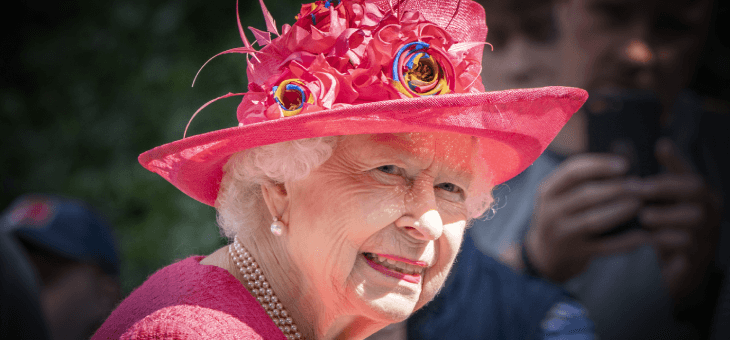Queen Elizabeth II, who celebrated her 96th birthday on 21 April, is in remarkably good health for her age.
The nonagenarian mother-of-four, grandmother-of-eight and great-grandmother-of-12 has been active in public life for more than seven decades, displaying great strength and resilience throughout the ups and downs of her reign.
Rarely falling ill, the longest-reigning monarch in British history is not known to have any major medical conditions, and has only ever missed official engagements on health grounds at the insistence of her doctors.
So how has Her Majesty stayed so spritely, and can we learn anything from her longevity?
Here are eight reasons that could explain why the Queen has enjoyed such a long, healthy life.
1. Regular holidays
As well as crisscrossing the globe on royal tours throughout her reign, every summer the Queen decamps to Balmoral Castle in Aberdeenshire for a few weeks of rest and relaxation. She was joined by late husband Prince Philip until his death in April 2021, with other members of the royal family often visiting.
In the 2016 ITV documentary, Our Queen at 90, Princess Eugenie explained: “It’s a lovely base for Granny and Grandpa to be – for us to come and see them up there where you just have room to breathe and run.”
Read: Crucial life lessons we can learn from the Queen
2. Lots of fresh air
A blue sky day at Balmoral Castle. pic.twitter.com/qsAOD5dMfg
— Balmoral Castle & Estate (@Balmoral_Castle) March 1, 2022
The monarch spends private weekends and usually a month every Easter at Windsor Castle in Berkshire, where the adjoining Home Park provides ample space to roam in leafy woodland. Summers at the 50,000-acre Balmoral Estate also feature lots of time in the great outdoors.
Princess Eugenie added: “I think Granny is the most happy there, I think she really, really loves the Highlands… walks, picnics, dogs, a lot of dogs, there’s always dogs and people coming in and out.”
3. Caring for her dogs
Speaking of dogs, the Queen has owned more than 30 during her lifetime, most famously corgis, as well as cocker spaniels and dorgis (a dachshund/corgi cross).
The royal pooches are said to be a huge source of joy and support for Her Majesty, who walked them herself up until last year, when she reportedly became too frail to do so.
Read: 13 of the Queen’s most incredible fashion moments
4. Horse riding
The Queen’s other pet passion is horses. Gifted a Shetland pony at the age of four, she began riding in childhood and is closely involved in the care of the horses she owns for breeding, racing and riding.
Regularly pictured on horseback in the grounds of Windsor Castle, Her Majesty rode until the age of 95, and was said to be disappointed when she she was forced to hang up her riding boots for good, according to The Sun.
5. Top-notch medical care
It’s important to acknowledge that while in many ways the Queen’s lifestyle has helped her stay as fit as a fiddle, she is also able to benefit from world-class medical care.
The royal household’s team of doctors is headed up by Professor Sir Huw Thomas, who was appointed head of the Medical Household and physician to the Queen in 2014.
6. A strong marriage
The Queen and Prince Philip were married for 73 years and research has showed how powerful a supportive spouse can be. A University College London 2017 study found that marriage was linked to a reduced risk of dementia. A 2018 study by Keele University found married people had a decreased risk of coronary heart disease and stroke mortality. Several studies have suggested being married could help you live longer.
7. A simple diet
The Queen may have a fleet of professional cooks at her disposal, but her diet is relatively simple.
According to former royal chef at Buckingham Palace, Darren McGrady, as reported in The Independent, she eats four small meals a day (breakfast, lunch, afternoon tea and dinner), favours unpretentious main meals such as grilled fish and vegetables or chicken salad, and dislikes strong flavours such as garlic or spices.
Read: What would life be like without Queen Elizabeth II?
8. Enjoying treats in moderation
That’s not to say the Queen doesn’t indulge on occasion. In terms of tipples, she is said to be partial to a gin and Dubonnet or a glass of champagne.
Chef McGrady added that Friday was fish and chips day when he worked at the palace, and that Her Majesty has a real sweet tooth, with chocolate being her favourite confection.
Dark chocolate, in particular, is said to have a variety of health benefits. As a source of antioxidants, A Harvard University study found eating it lowered blood pressure in all participants.
– With PA
If you enjoy our content, don’t keep it to yourself. Share our free eNews with your friends and encourage them to sign up.

